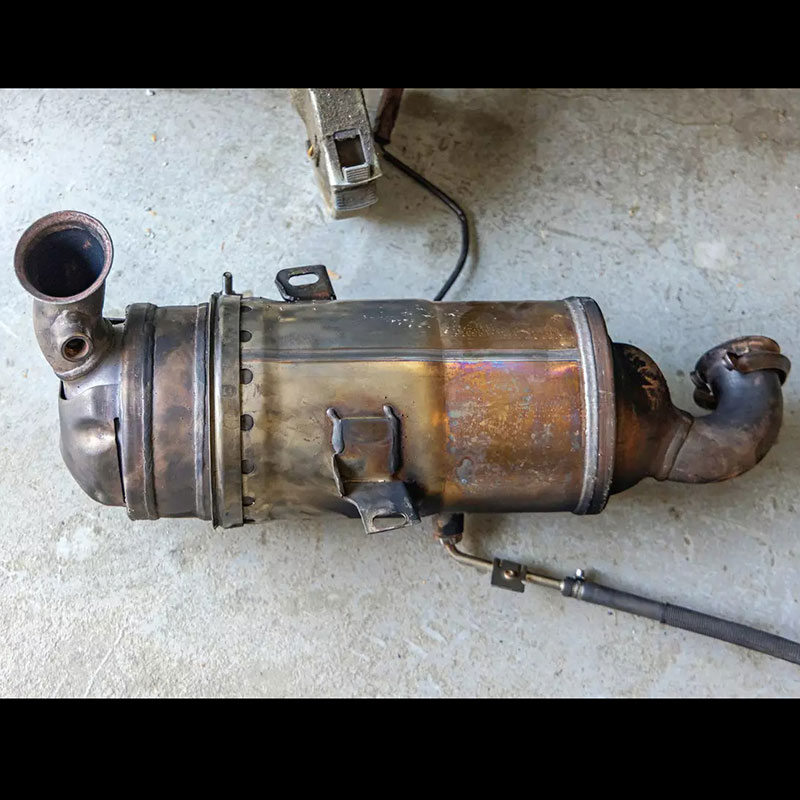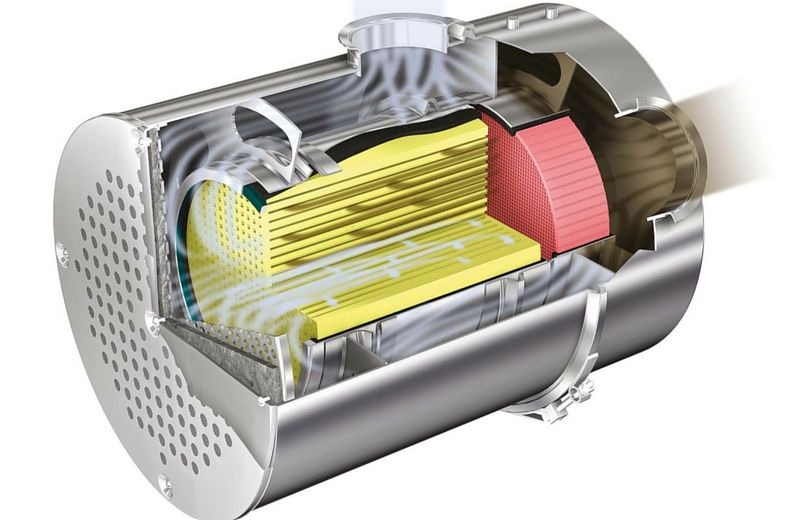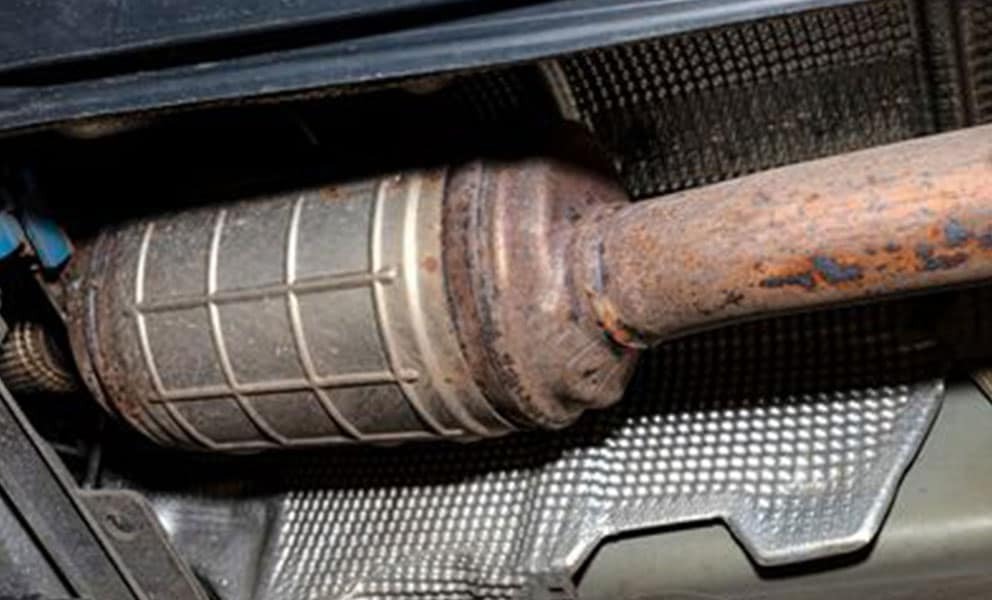

What Causes a DPF Filter to Clog?
Table of Content
- 1. What is a DPF Filter and How Does it Work?
- How DPF Regeneration Works
- 2. What Driving Habits Contribute to DPF Clogging?
- Short Trips and Stop-and-Go Traffic
- Idling for Extended Periods
- 3. How Do Fuel Quality and Additives Impact DPF Health?
- High-Sulfur Fuel
- Incorrect Oil Type
- 4. What Engine Problems Can Lead to a Blocked DPF?
- EGR Valve Issues
- Faulty Fuel Injectors
- Turbocharger Problems
- Air Intake Leaks
- 5. How Do DPF Sensor Failures Cause Clogging?
- Differential Pressure Sensor
- Temperature Sensors
- 6. What Role Does the Additive Tank Play in DPF Functionality?
- Additive Depletion
- Additive System Malfunctions
- 7. How Does Vehicle Maintenance Impact DPF Clogging?
- Substandard Servicing
- Unattended Faults
- FAQ: DPF Filter Clogging
- Contact AutoExplain
A DPF filter clog is often caused by underlying engine issues or driving habits that prevent the filter from properly regenerating. Addressing these root causes is essential before cleaning or replacing the DPF to ensure a lasting solution and optimal vehicle performance. AutoExplain.com is here to assist you.
1. What is a DPF Filter and How Does it Work?
The Diesel Particulate Filter (DPF) is an emissions control device designed to trap particulate matter (PM), or soot, from the exhaust of diesel engines. According to research from the Environmental Protection Agency (EPA), DPFs can reduce PM emissions by over 90%. It works by physically filtering exhaust gases, preventing the release of harmful soot into the atmosphere.
How DPF Regeneration Works
The DPF doesn’t just trap soot indefinitely; it goes through a process called regeneration to burn off the accumulated particles. This process raises the exhaust temperature to around 600 degrees Celsius (1112 degrees Fahrenheit), incinerating the soot into ash. Regeneration can occur passively, actively, or through forced regeneration:
- Passive Regeneration: This happens automatically during normal driving conditions when the exhaust temperature is high enough. Highway driving often provides the necessary heat.
- Active Regeneration: When the soot level reaches a certain threshold and passive regeneration isn’t possible, the engine control unit (ECU) initiates active regeneration. This involves injecting extra fuel to raise the exhaust temperature.
- Forced Regeneration: In cases of severe clogging, a technician can use diagnostic equipment to manually trigger regeneration. This is often done at a repair shop.

2. What Driving Habits Contribute to DPF Clogging?
Certain driving habits significantly increase the likelihood of DPF clogging. These habits often prevent the DPF from reaching the temperatures needed for effective regeneration.
Short Trips and Stop-and-Go Traffic
Frequent short trips prevent the engine from reaching its optimal operating temperature. According to a study by the Department of Transport, vehicles used primarily for short journeys produce significantly higher emissions. Stop-and-go traffic further exacerbates the problem, as the exhaust temperature remains too low for passive regeneration.
Idling for Extended Periods
Excessive idling can also contribute to DPF clogging. When a diesel engine idles, it produces soot, but the exhaust temperature is too low to burn it off. This leads to a gradual accumulation of particulate matter in the DPF.
3. How Do Fuel Quality and Additives Impact DPF Health?
The quality of fuel and the use of appropriate additives play a crucial role in maintaining DPF health. Poor fuel quality and incorrect additives can accelerate DPF clogging and damage the filter.
High-Sulfur Fuel
Using fuel with a high sulfur content can lead to the formation of sulfate ash, which clogs the DPF and reduces its efficiency. Low-sulfur diesel is required for vehicles with DPFs to minimize ash accumulation.
Incorrect Oil Type
Using the wrong type of engine oil is a common cause of DPF problems. Diesel engines with DPFs require low-ash, low-sulfur oil. Standard engine oils contain additives that can leave behind ash deposits in the DPF, leading to premature clogging.

4. What Engine Problems Can Lead to a Blocked DPF?
Several engine problems can cause excessive soot production, overwhelming the DPF and leading to clogging. Addressing these issues is crucial for preventing future DPF problems.
EGR Valve Issues
The Exhaust Gas Recirculation (EGR) valve recirculates a portion of the exhaust gas back into the engine’s intake manifold, reducing NOx emissions. According to research by the National Renewable Energy Laboratory (NREL), a malfunctioning EGR valve can cause incomplete combustion, leading to excessive soot production.
- Stuck or Fouled EGR Valve: A stuck or fouled EGR valve can cause the engine to run rich, resulting in increased soot formation.
- EGR Valve Leaks: Leaks in the EGR system can disrupt the air-fuel mixture, leading to incomplete combustion and higher soot levels.
=> Related content: EGR Valve Problems Symptoms
Faulty Fuel Injectors
Fuel injectors are responsible for delivering fuel into the engine’s cylinders. If the fuel injectors are faulty, they can cause poor fuel atomization and incomplete combustion, resulting in increased soot production.
- Leaking Injectors: Leaking fuel injectors can cause the engine to run rich, leading to excessive soot.
- Clogged Injectors: Clogged injectors can restrict fuel flow, leading to lean combustion and increased soot formation.
Turbocharger Problems
A malfunctioning turbocharger can also contribute to DPF clogging. A turbocharger forces more air into the engine, increasing its power and efficiency. However, if the turbocharger is damaged or worn, it can leak oil into the exhaust system.
- Oil Leaks: Oil leaks from the turbocharger can burn in the exhaust, producing excessive soot and ash that clog the DPF.
- Inefficient Boost: An inefficient turbocharger can reduce the engine’s combustion efficiency, leading to increased soot production.
Air Intake Leaks
Air intake leaks can disrupt the air-fuel mixture, causing incomplete combustion and increased soot production. Leaks can occur in the intake manifold, hoses, or seals.
5. How Do DPF Sensor Failures Cause Clogging?
DPF systems rely on various sensors to monitor performance and trigger regeneration. Faulty sensors can disrupt the regeneration process, leading to clogging.
Differential Pressure Sensor
The differential pressure sensor measures the pressure difference between the inlet and outlet of the DPF. This reading indicates the level of soot accumulation in the filter. If the sensor fails, the ECU may not initiate regeneration when needed, leading to clogging.
Temperature Sensors
Temperature sensors monitor the temperature of the DPF during regeneration. If a temperature sensor fails, the ECU may not be able to accurately control the regeneration process, leading to incomplete combustion and clogging.
6. What Role Does the Additive Tank Play in DPF Functionality?
Some vehicles use an additive tank containing a fuel additive that lowers the temperature required for DPF regeneration. If the additive tank is low or empty, the DPF may not regenerate properly, leading to clogging.
Additive Depletion
The additive in the tank is gradually consumed during regeneration. If the tank is not refilled regularly, the DPF may not be able to regenerate effectively.
Additive System Malfunctions
Malfunctions in the additive system, such as a faulty pump or injector, can prevent the additive from being properly injected into the fuel, leading to DPF clogging.
7. How Does Vehicle Maintenance Impact DPF Clogging?
Poorly maintained vehicles are more prone to DPF clogging. Regular maintenance, including oil changes, air filter replacements, and fuel system cleaning, is essential for preventing DPF problems.
Substandard Servicing
Using low-quality parts or neglecting recommended maintenance intervals can lead to engine problems that contribute to DPF clogging.
Unattended Faults
Ignoring engine faults can exacerbate soot production and accelerate DPF clogging. Addressing engine problems promptly can prevent further damage to the DPF.
FAQ: DPF Filter Clogging
1. How often should I regenerate my DPF filter?
The frequency of DPF regeneration depends on driving conditions and vehicle usage. Under ideal conditions (frequent highway driving), regeneration may occur every 300-500 miles. However, in stop-and-go traffic, regeneration may be required more frequently.
2. Can I clean a DPF filter myself?
While some DIY cleaning methods exist, it’s generally recommended to have a professional clean the DPF. Improper cleaning can damage the filter.
3. What are the symptoms of a clogged DPF filter?
Symptoms of a clogged DPF filter include reduced engine power, increased fuel consumption, a warning light on the dashboard, and the engine entering limp mode.
4. Is it better to clean or replace a DPF filter?
Whether to clean or replace a DPF filter depends on the severity of the clogging and the condition of the filter. If the filter is severely clogged or damaged, replacement may be necessary. However, if the filter is in good condition, cleaning may be a more cost-effective option.
5. How much does it cost to clean a DPF filter?
The cost to clean a DPF filter can vary depending on the shop and the cleaning method used. On average, professional DPF cleaning can range from $300 to $800.
6. Can a clogged DPF damage my engine?
Yes, a clogged DPF can damage your engine. Backpressure from the clogged filter can cause increased engine wear and reduced performance. In severe cases, it can lead to engine failure.
7. What is forced regeneration?
Forced regeneration is a process where a technician uses diagnostic equipment to manually trigger DPF regeneration. This is typically done when the DPF is severely clogged and passive or active regeneration is not possible.
8. How can I prevent DPF clogging?
To prevent DPF clogging, make sure to drive in such a way that you have regular long distance trips, use the correct oil type, maintain your vehicle properly, and address any engine problems promptly.
9. Are there any fuel additives that can help prevent DPF clogging?
Yes, there are fuel additives that can help prevent DPF clogging. These additives lower the temperature required for regeneration and help keep the fuel system clean.
10. What should I do if my DPF warning light comes on?
If your DPF warning light comes on, consult your vehicle’s owner’s manual for specific instructions. In many cases, driving at a steady speed on the highway for 20-30 minutes can initiate regeneration and clear the light. If the light persists, have your vehicle inspected by a qualified technician.
Contact AutoExplain
Need expert help with your DPF or any other car issue? Contact AutoExplain.com for quick, professional remote support via WhatsApp at (+84)967469410 or email at AutoExplain[email protected]. Visit AutoExplain.com today.
=> Related content:

65535 Audi Fault Code: Expert Solutions and Fixes
Audi A3 Trouble Code 00796: Diagnosis, Solutions, and Expert Insights
Audi DTC 16347:014 – Expert Diagnosis and Solutions

Josh William
Josh William is a seasoned automotive expert and technical writer at AutoExplain. With a background as an automotive technician, he brings hands-on experience and deep industry knowledge to his writing.




One Response